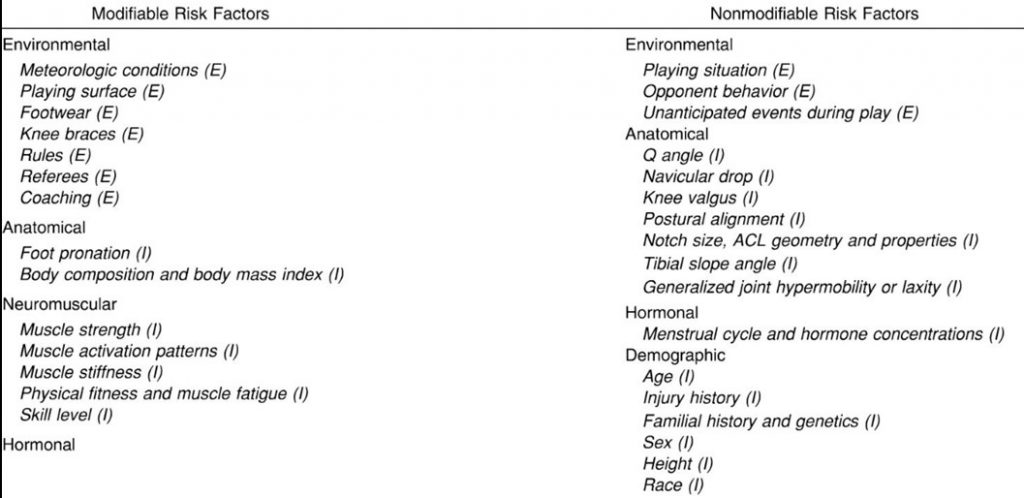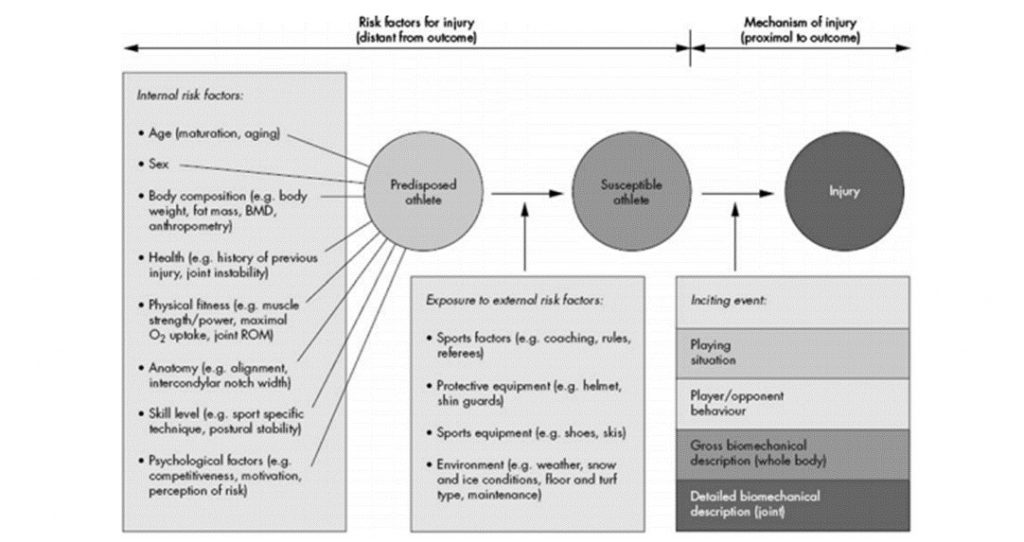Tiger Woods’ Future in Golf
- Why is it dangerous for “typical” golf instruction to be given to an injured golfer?
- What is “typical” golf instruction?
- What can the average golfer learn from all this?
- An understanding of the structure and function of seven main “joints” involved in golf –
- Knowledge of which tissues (such as bone, muscle, tendon, ligament, cartilage) are commonly injured and the mechanism of those injuries, or which factors are likely to cause them.
- Knowledge of which body segments are typically injured and the etiology or causation of those
 If a coach has all this knowledge, she/he should be able to understand, based on posture, gait, images of former injury, anthropometrics and even psychological makeup the predisposing risk factors. Then the factors which might take an athlete from predisposed to susceptible should be considered and avoided.
If a coach has all this knowledge, she/he should be able to understand, based on posture, gait, images of former injury, anthropometrics and even psychological makeup the predisposing risk factors. Then the factors which might take an athlete from predisposed to susceptible should be considered and avoided.  While a physiotherapist or fitness coach could help change some anatomical or neuromuscular risk factors, the main risk factor a coach can eliminate or reduce the effect of, is biomechanical. Which loads act on a particular joint or several joints, what adverse effects will that have, and what can the coach do to alleviate reduce loads so as to lower the risk for injury, while improving ball-striking and consistency at the same time, if possible? The days of “use this grip”, “swing on that plane”, “lag at this stage”, “cover the ball”, “rotate the thorax over a stable pelvis” should be long gone, because none of that information has ever been scientifically proven to be effective, nor have the injury-causing potential of those ideas been studied. Also, it must be clearly understood that the golfer controls the club, and thus body-positions and movements through impact is all that changes ball-flight and reduces the likelihood of injury.
While a physiotherapist or fitness coach could help change some anatomical or neuromuscular risk factors, the main risk factor a coach can eliminate or reduce the effect of, is biomechanical. Which loads act on a particular joint or several joints, what adverse effects will that have, and what can the coach do to alleviate reduce loads so as to lower the risk for injury, while improving ball-striking and consistency at the same time, if possible? The days of “use this grip”, “swing on that plane”, “lag at this stage”, “cover the ball”, “rotate the thorax over a stable pelvis” should be long gone, because none of that information has ever been scientifically proven to be effective, nor have the injury-causing potential of those ideas been studied. Also, it must be clearly understood that the golfer controls the club, and thus body-positions and movements through impact is all that changes ball-flight and reduces the likelihood of injury.